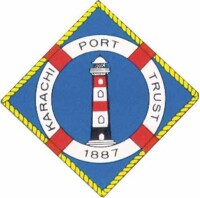Faisal Shazad Review of Karachi Port Trust
The Port of Karachi (Urdu: Bandar g ...
The Port of Karachi (Urdu: Bandar g h Kar ch ) is one of South Asia's largest and busiest deep-water seaports, handling about 60% of the nation's cargo (25 million tons per annum) located in Karachi, Pakistan. It is located between the Karachi towns of Kiamari and Saddar, close to the main business district and several industrial areas. The geographic position of the port places it in close proximity to major shipping routes such as the Strait of Hormuz. The administration of the port is carried out by the Karachi Port Trust, which was established in the nineteenth century.
The prominence of the port attracted the British, who opened a factory in Karachi at the end of the eighteenth century but disagreements with the Mirs on trade tariffs led to the closure of the factory. The British were concerned about Russian expansion towards the Arabian Sea, so in 1839 they occupied Karachi and later the whole of the Sindh. The port served as a landing point for troops during the First Afghan War. The river Indus was an important artery of communication between Karachi and Jhirk Near Kotri Sindh, was an important river port. The Indus flotilla used large quantities of firewood and it was kept to fuel steamboats. A number of British companies opened offices and warehouses in Karachi and the population increased rapidly. By 1852, Karachi was an established city with a population of 14,000 and a prosperous overseas trade. The modern port began to take shape in 1854, when the main navigation channel was dredged and a mole or causeway was constructed to link the main harbour with the rest of the city. This was followed by construction of Manora breakwater, Keamari Groyne, the Napier Mole Bridge and the Native Jetty Bridge. The construction of the wharves started in 1882, and by 1914 the East Wharf and the Napier Mole Boat Wharf were complete while 1927 and 1944, the West Wharf, the lighterage berths and the ship-repair berths were constructed between 1927 and 1944.

Comments: